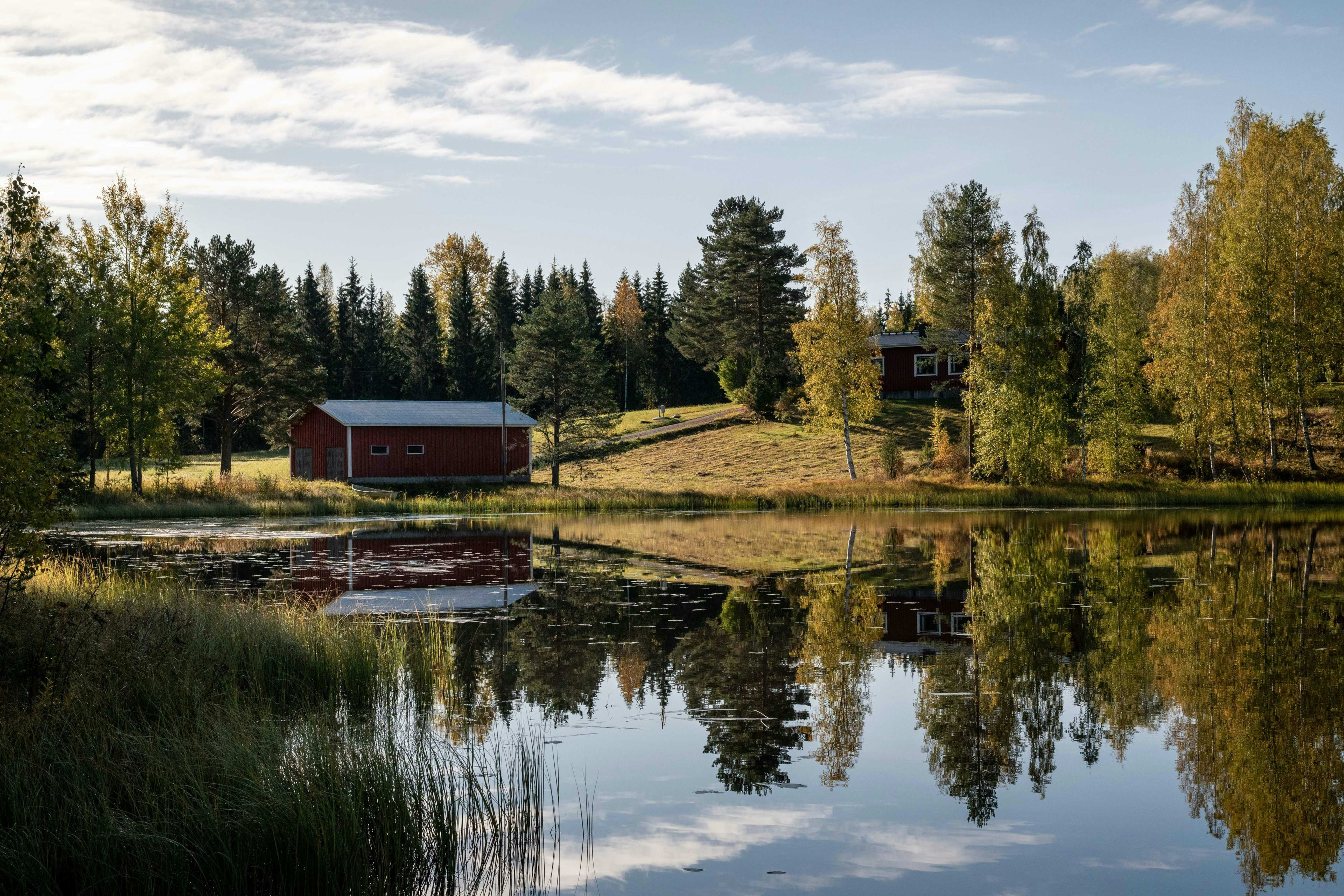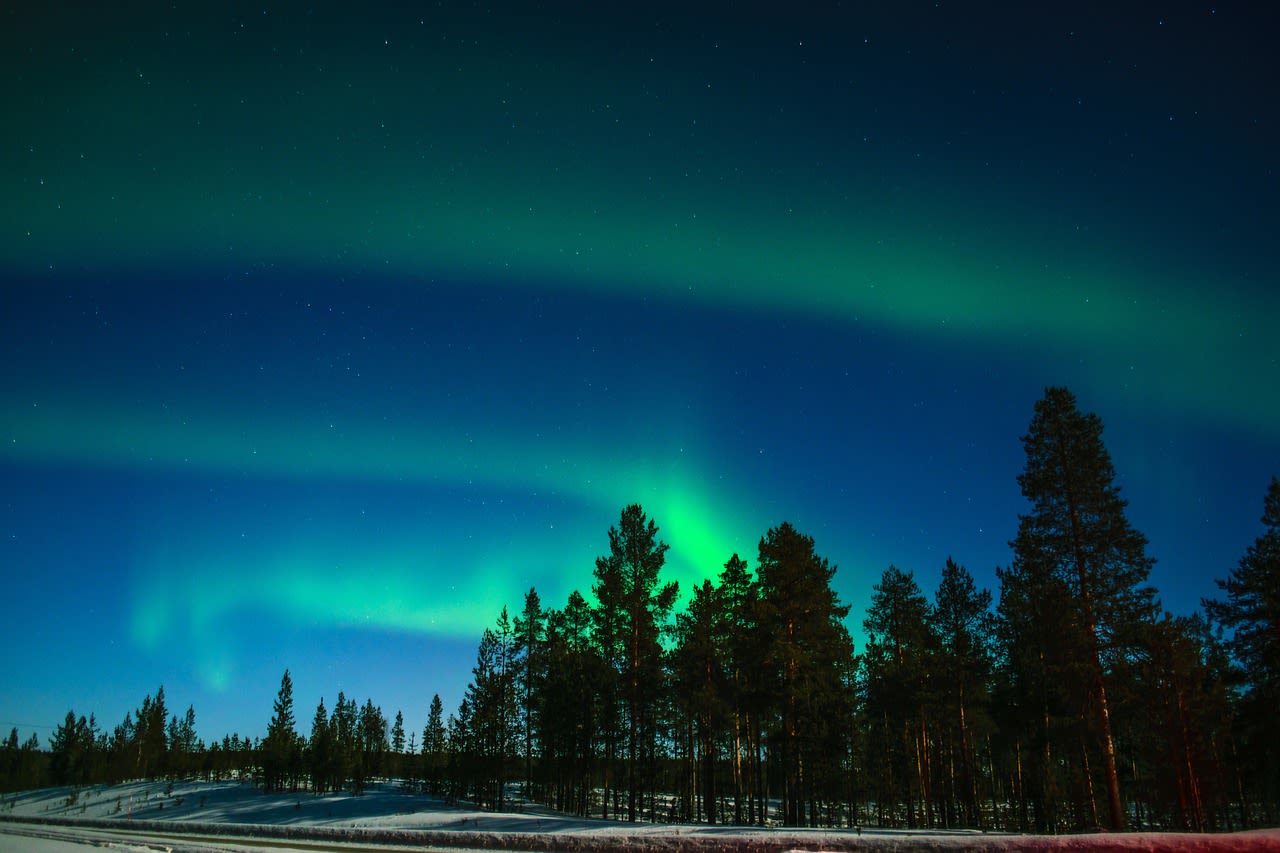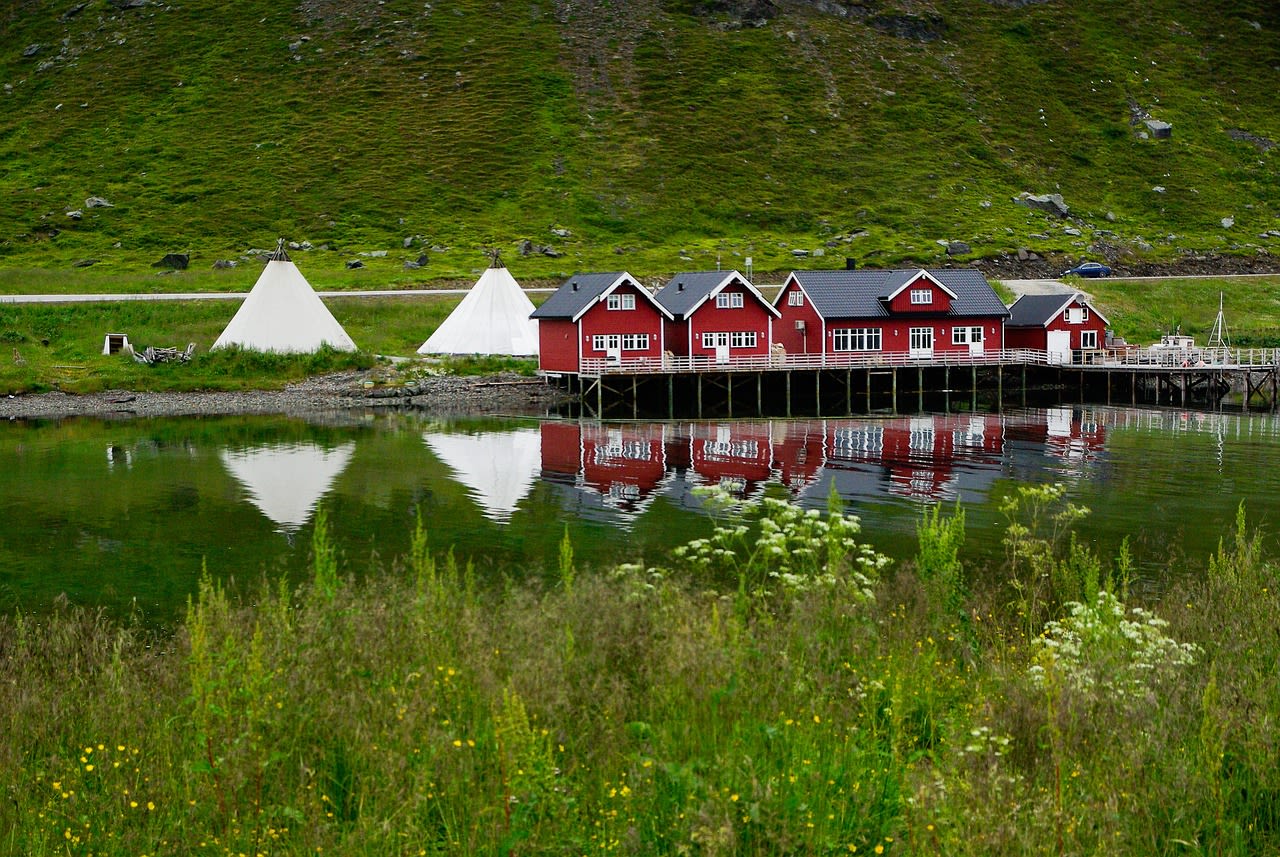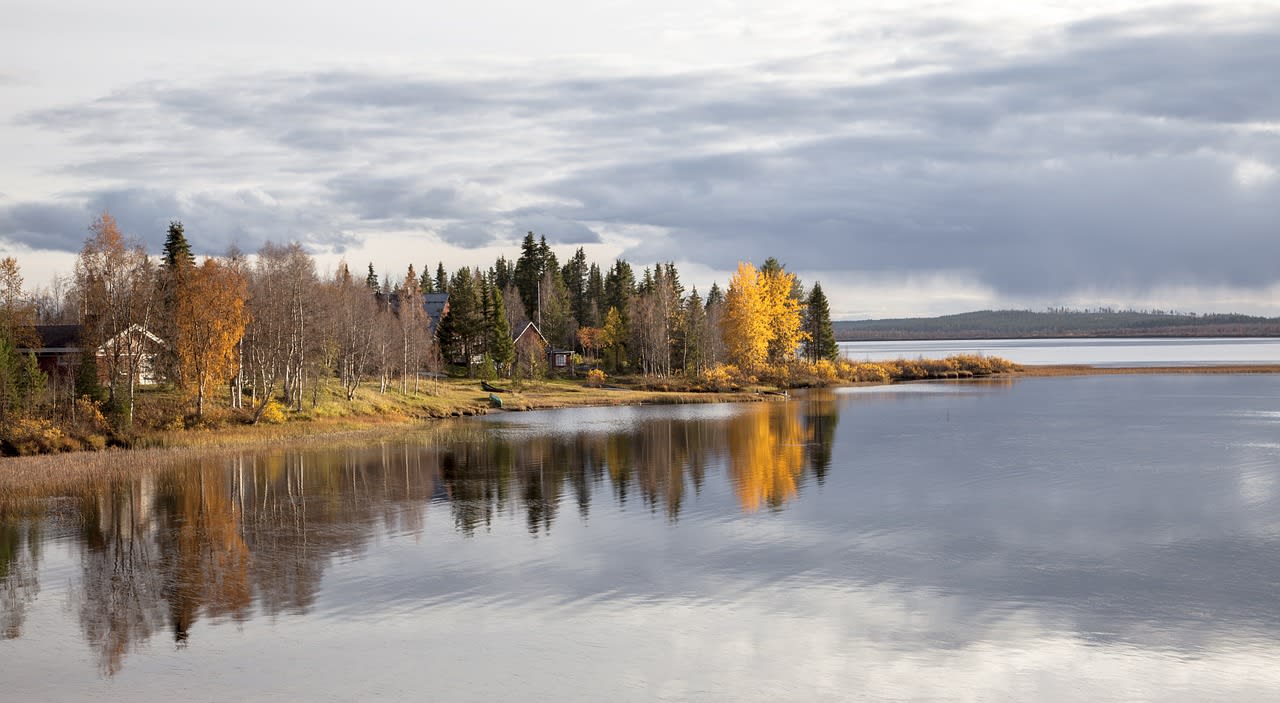When should you visit Lapland?

Although Lapland is best known as a winter destination, it also offers plenty of opportunities for outdoor activities all year round! Explore the mountain bike trails in summer under the midnight sun, enjoy a canoeing trip in spring or admire the autumn colours on a hike! Whatever your favourite season, rediscovering it in Lapland is bound to be a good idea.
Lapland is the perfect destination for nature lovers and outdoor enthusiasts. Travelling through this remote region, you'll often feel as if you're alone in the world. Indeed, apart from Lapland's main towns and cities, this region is mainly a vast natural expanse covering some 388,350 km². Visiting Lapland is therefore a unique opportunity to recharge your batteries in the heart of unique, unspoilt landscapes.
And it's not just Lapland's landscapes that are unique. Its subarctic or arctic climate, depending on the location, is an important factor to take into account. It is partly the climate that shapes the landscapes, and it will have a significant impact on your experience.
When should you visit Lapland?
Depending on your personal preferences, the activities you enjoy or the reason that brings you to the region, there is bound to be an ideal season for your visit to Lapland. For many people, a trip to Lapland is partly motivated by the desire to admire the Northern Lights. However, Lapland has much more to offer whatever the season. From winter to summer, Lapland remains a popular natural destination for visitors.
When should you visit Lapland to see the Northern Lights?

Let's start with the question on everyone's lips: when should you travel to Lapland to see the Northern Lights?
The aurora is a natural phenomenon that occurs in the polar regions. In fact, there are 2 types of polar aurora. These are known as the "northern lights" at the North Pole and the "southern lights" at the South Pole. In Lapland, it's the northern lights that you'll be able to see.
These aurorae form when the solar wind comes into contact with the Earth's magnetosphere. As the Earth's magnetosphere is shaped like an arc towards the poles, the particles pass through its field and arrive at the auroral ovals located in Lapland.
Although the phenomenon occurs all year round, there is only one specific time of year when the Northern Lights can be seen. In fact, winter is a much more favourable season for observing the Northern Lights in Lapland. Between November and March, the nights are long and dark, making it easier to see them.
Early spring and late autumn also offer good conditions in September, October, March and early April. During these months, the skies are fairly dark and temperatures are milder. This can be an important consideration if you want to remain inactive outdoors for a long period of time!
On the other hand, daylight and the midnight sun make the Northern Lights invisible to our eyes, although the phenomenon continues to occur. Of course, if you want to give yourself the best chance of seeing the Northern Lights, you also need to take two other factors into account: the location and the weather. You'll need clear skies in a location as far away from city light pollution as possible. Join a Northern Lights viewing tour in Northern Norway and make the most of your chances by setting off with a professional guide!
Visiting Lapland in winter

Winter is THE characteristic season of Lapland. It is the longest season and it is generally this season that attracts visitors to the region. From a tourist point of view, this is the peak season and crowds can be high, especially in the towns.
Winter in Lapland is extremely cold. Temperatures often drop below -20°C and sometimes reach -30°C or even lower, especially in inland regions. Temperatures are generally a little milder in the regions close to the Norwegian coast, due to the influence of the North Atlantic Ocean. Snowfall is abundant from November to April. Finally, the phenomenon of polar night results in extremely short or completely dark days.
At this time of year, Lapland is a winter wonderland. The landscapes are magical, covered in a thick white blanket of snow. The days get shorter depending on the latitude, but they'll be short no matter what! Despite this, the locals are well equipped and know how to cope with the polar night. You'll be amazed by all the garlands of lights decorating the traditional wooden houses, as well as by the many street lamps dotted around the villages. What's more, even though the days are short, the light of the polar winter is unique. As the sun stays close to the horizon and does not rise into the sky, the light remains orange all day long, like that of a lingering sunset!
Winter is, of course, the best time to enjoy outdoor activities in Lapland. It's the perfect time to try out the must-do winter activities such as dog-sledding near Levi, watching the Northern Lights,snowmobile excursions and so on. While these activities allow you to enjoy the region's sublime nature, they also offer an insight into the local culture.
Visiting Lapland in spring

In Lapland, early spring is a popular season for visitors wishing to enjoy winter-like conditions with longer days and more sustainable temperatures. Nevertheless, this is still a low season from a tourism point of view, so visitor numbers are moderate.
After a long winter, spring is the season when nature wakes up again. In March or April, depending on the year, and until May, the snow gradually begins to melt, the days get longer and wildlife starts to become more active. In March and April, temperatures are still very cold (between -10 and 5°C). Snow can continue to fall heavily in some places. From May onwards, average temperatures become positive and can reach up to 10°C. Precipitation then takes the form of rain. Of course, this can vary from one region of Lapland to another, with inland areas generally being colder than coastal areas.
Visiting Lapland in spring is an excellent way to enjoy winter weather without having to deal with the region's characteristic darkness. The days lengthen dramatically, going from relatively short days in March to almost continuous days of light at the end of May. With the return of light and the melting of the snow, the landscapes become much more alive. Flowers grow, reindeer move around more and lakes and rivers thaw.
To make the most of this season, you still have the option of enjoying winter activities such as watching the Northern Lights, dog-sledding or reindeer-sledding. As long as there's snow, it's the perfect time of year to go snowshoeing in Abisko National Park, while enjoying milder temperatures and, with a bit of luck, a sunny day. As soon as the snow melts, the classic hiking trails become accessible again, and as the rivers thaw, canoeing is a great opportunity to admire the gradual awakening of nature from a unique vantage point. You may even be able to see the return of some migratory birds to the region!
Visiting Lapland in summer

The midnight sun is the big star of summer in Lapland! This unique phenomenon attracts many visitors to the region, offering timeless experiences in the heart of nature.
From a purely factual point of view, the season generally runs from June to August. The days get progressively longer until the summer solstice on 21 June, before getting shorter again at the end of the summer. In June, temperatures start to rise and the average is usually between 10 and 15°C, although the nights remain cold and temperatures can fall below 5°C. July is generally the hottest month of the year, with average temperatures between 15°C and 20°C. In the south of Lapland, temperatures can even reach 25°C! Finally, temperatures remain pleasant in August, fluctuating between around 10°C and 18°C. As far as rainfall is concerned, summer is fairly wet, with average rainfall varying between 50 and 80 mm per month. However, showers are generally short-lived.
If spring was the season when nature woke up, summer is a sleepless night in Lapland! With the incredible phenomenon of the midnight sun, the sun does not set for several weeks north of the Arctic Circle. Rather like winter light, the light provided by the midnight sun is very special. The sun never dips below the horizon, but comes close to it just as it does at sunset. This produces a sublime orange light that covers the landscape and is reflected on the water. On top of this, summer brings an explosion of greenery that allows wildlife to be more active than ever.
In summer, you can enjoy outdoor activities at any time of the day or night! Take a hike or a canoe trip on Lake Iniri in the middle of the night and listen to the birds singing at 3am! This time of year is also the perfect time to go cycling, boating, climbing or simply skinny-dipping in one of the region's remote lakes.
Visiting Lapland in autumn

Autumn is a very photogenic season in Lapland, and one that is often underestimated when visiting the region! And yet, at this time of year, there are few tourists and the forests take on magnificent colours.
In Lapland, autumn lasts from mid-September to early November, although this can vary from year to year. As this is a period of transition, the beginning of autumn is milder, with days that are still relatively long. Then, as the season progresses, the days get shorter and the temperatures drop. On average, temperatures vary between 0°C and 10°C. Precipitation can also vary, from rain to the first snowflakes at the end of autumn. Whatever the case, the landscapes take on truly unique shades of orange, gold and even red. In fact, there's even a Finnish term for the changing colour of autumn leaves in Lapland and other Nordic regions: ruska.
This picturesque season is not only beautiful, it also offers plenty of opportunities for locals. It's the time of year to pick cranberries, bilberries, raspberries, wild strawberries and arctic blackberries. What's more, wild picking is permitted in Lapland, so you can make the most of the region's natural resources. Autumn is also an ideal season for hiking and camping in the many national parks: Pallas-Yllästunturi National Park in Finland, Abisko National Park in Sweden and Jotunheimen National Park in Norway. Finally, autumn also offers the chance to admire the Northern Lights in milder temperatures than in winter.
Visiting Lapland in autumn is a great choice if you enjoy hiking or photography. It's also a good time to observe wildlife, as it's more visible at this time of year. Lemmenjoki National Park and Sarek National Park, for example, are good places to observe wildlife in a wild environment. In autumn, you can also try rock climbing in the wild. Mountains and rock formations offer good opportunities for climbing, particularly in parks such as Jotunheimen in Norway and Sarek in Sweden. If you prefer water-based activities, the lakes in the region also offer canoeing, kayaking and fishing.
Whatever your favourite season, Lapland can be the perfect destination for you at any time of year. Take a look at our activities and plan your next trip!